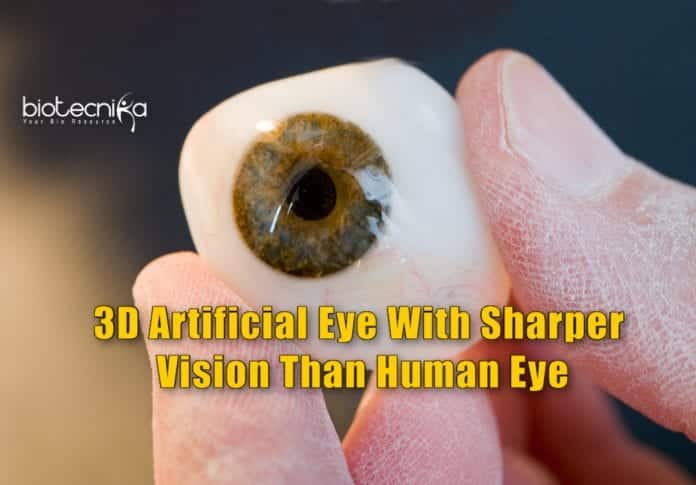Hong Kong Researchers Develop Artificial Eye With 3D Retina.
The world’s first 3D artificial eye with capabilities better than the currently available bionic eyes has been invented by a team of scientists at the Hong Kong University of Science and Technology (HKUST). These 3D eyes can sometimes even exceed the capabilities of human eyes, bringing the vision to humanoid robots and new hope to patients with visual impairment.
For the last few years, scientists had been working to develop an artificial eye that has the clarity and structure of a biological eye. However, the prosthetic eyes currently available in the market have a poor resolution with 2D flat image sensors. But for the first time, the new electrochemical eye (EC-Eye) developed at HKUST has the structure of a biological eye and even carries the potential to offer sharper vision with extra capabilities to detect infrared radiation in darkness.
The researchers led by Dr. GU Leilei and Prof. FAN Zhiyong from the Department of Electronics and Computer Engineering at HKUST connected the nanowire light sensors that mimic the function of photoreceptors in human retinas to a bundle of liquid-metal wires that act as nerves behind the artificial retina. Thus the visual
signal transmission was replicated in the artificial eye to reflect what the eye sees onto the computer screen.The nerves of the visually impaired patients could be directly connected to those nanowire light sensors in the future. In a human eye, bundles of optic nerve fibers required for signal transmission need to route from the front side of the retina to the backside via a pore, creating a blind spot in human vision. But the blind spot issue can be eliminated with the light sensors scattered across the artificial retina. Each light sensor could feed signals through its own liquid-metal wire at the back and therefore do not need to route through a single spot.
Moreover, the human-made retina can receive more light signals and could have higher image resolution than the human retina in the future, as the nanowires are denser than the photoreceptors in the human retina. The artificial retina may even achieve other functions like night vision with different materials used to enhance the spectral range and sensitivity of sensors.
The bionic eyes currently available are no match to a human eye. Prof. Fan, whose team has spent nine years to complete the current study, said a new technology to address these problems was urgently required, and it motivated him to start this unconventional project.
University of California, Berkeley, collaborated with the team in this project.
The scientists are planning to improve the stability, performance, and biocompatibility of their new device. Prof. Fan added that they are looking forward to partnering with medical research experts skilled in ocular prosthesis and optometry for applications of EC-Eye in the prosthesis.
An electrochemical process adopted from a type of solar cell was employed in this artificial eye. This artificial eye with a 3D retina can be further modified to convert it to a self-powered image sensor that doesn’t need an external power source when used for an ocular prosthesis.






























